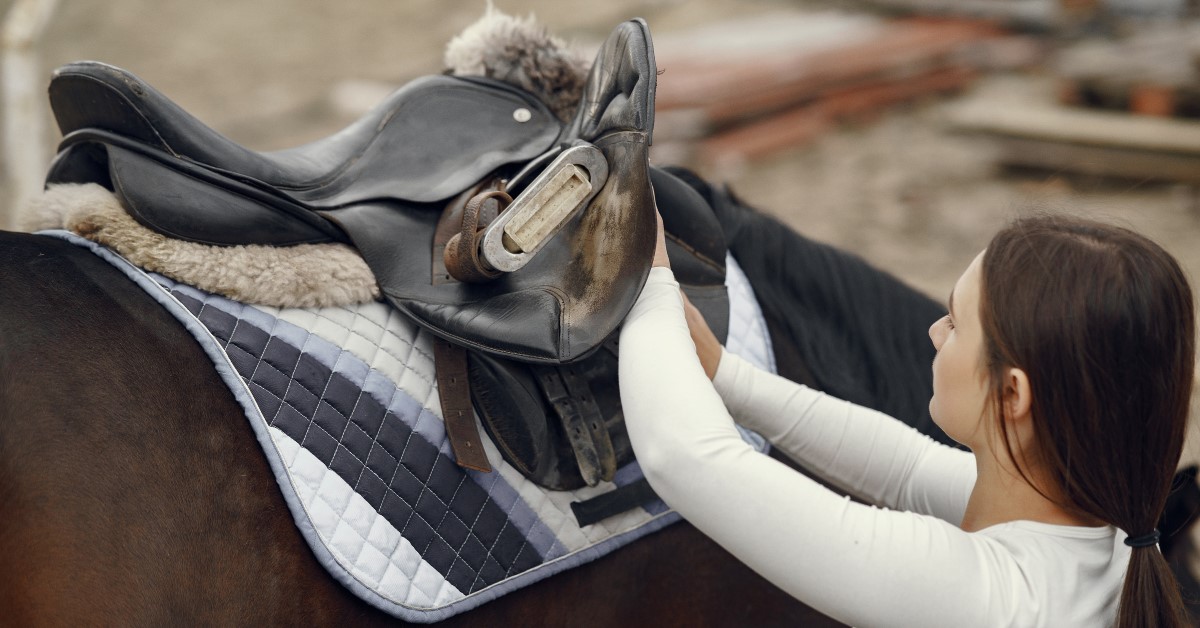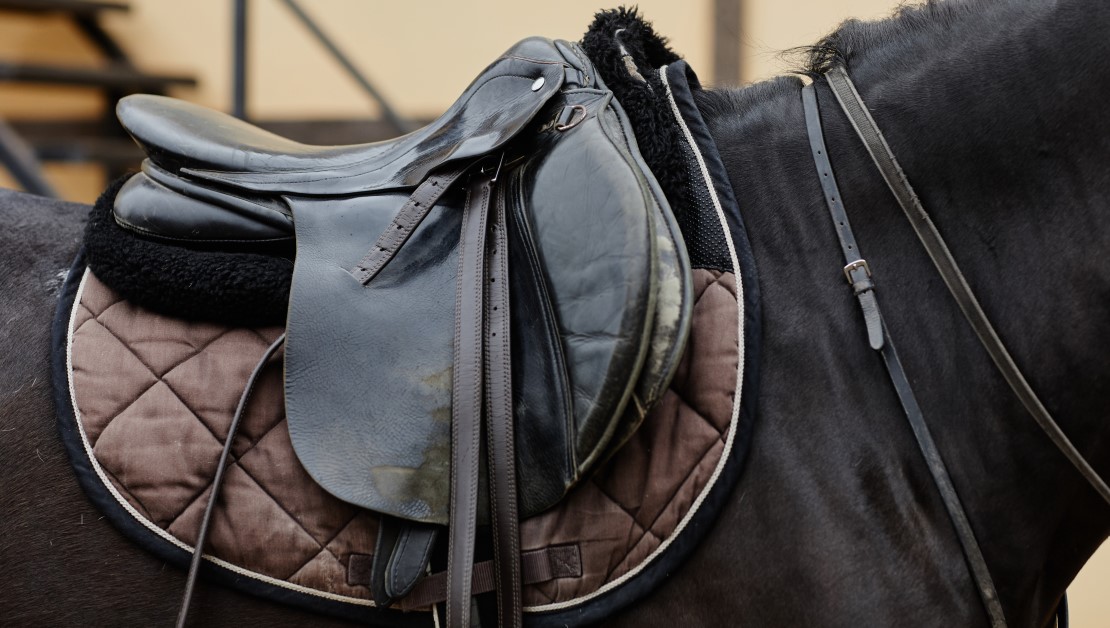Saddle Fitting: Common Problems and How to Solve Them
If you own a horse, you'll want to protect your equine companion from common saddle fit issues.

A happy, healthy, well-trained horse can serve as a trusted companion as well as reliable transportation. You may love nothing more than extended rides with your favorite equine friend. However, even small errors in a saddle's fit can result in sores, skin breakdown, and other serious health problems for your horse. Let's take a look at some common horse saddle problems, from their causes and symptoms to veterinary treatments and preventative solutions.
How Your Horse's Saddle Should Fit
As robust as your horse may appear, he or she can't easily cope with a saddle that sits awkwardly on its back. The area that can safely accommodate a saddle takes up a relatively small space, from just behind the horse's shoulder blades to the rearmost ribs attached to the thoracic vertebrae. If your horse's saddle sits too far forward or backward, it will eventually produce health and comfort problems for the animal.
To make sure you've fitted a saddle correctly, start by placing the saddle over your horse's withers and then shift it back until it rests just behind this area. Then check to make sure that the back of the saddle lines up with those rearmost ribs.
Why That Saddle Doesn't Fit Properly
Like humans, horses come in various sizes and have their own individual physical quirks. you can't expect the same saddle to fit every horse any more than you would expect to fit into every pair of jeans off the clothing rack. Horses typically have larger muscles on one side of the body then the other, meaning that a perfectly symmetrical saddle will sit off-filter and cause problems. A professional saddle fitter can customize a saddle to fit your horse's specific anatomy.
Sometimes saddle fit problems involve the rider instead of the horse. For instance, women require a slightly different saddle design than men in order to sit in a balanced, comfortable position. If you feel off balance, your horse may sense your instability and resist your commands. You may also end up putting too much pressure on your horse's back if the saddle tends to shift your weight backward.
What a Saddle Fit Error Can Do to Your Horse
Just as the wrong shoe size can injure your feet in agonizing ways, an ill-fitting saddle will rub painfully against a horse's skin when bearing a rider's weight. Inspect your horse carefully for any of the following signs of abnormal friction:
- Swollen withers - If you see soft. swollen spots on your horse's weathers, you may be looking at edema, or fluid accumulation, caused by irritation. Swollen withers may produce pain and redness as they grow progressively worse.
- Cinch sores - If your saddle sits on your horse incorrectly or its material triggers an allergic reaction, you may spot sores near the horse's armpits.
- Hair loss - Excessive friction between the saddle and a horse's skin can cause bald spots by rubbing away patches of hair. These bald spots may later develop open sores.
- Back changes - Strange flat spots or bumps along a horse's back often stem from poor saddle fit. Nodules under the skin can lead to permanent tissue damage.
- Ride changes - A horse in pain may refuse to do specific tricks or even move forward at all. Your horse may also exhibit signs of lameness.
Treatment and Preventative Measures
If you notice any signs of a saddle fit problem, take your horse to an equine veterinarian right away for evaluation and any necessary treatment. If a bald or sore spot has developed an infection, your vet may prescribe antibiotics and topical products to facilitate healing along with analgesics and anti-inflammatory drugs. Dead tissue beneath the skin may call for surgical removal, while drainage procedures can remove fluid pockets.
If your horse has cinch sores despite a properly-fitted saddle, allergy tests can determine whether your horse has a sensitivity to the materials in the cinch. Your horse might need to switch to a cinch made of hypoallergenic materials.
Keep in mind that a horse who experiences pain when bearing a rider may suffer from issues other than saddle fit problems. If your horse's back hurts when you try to ride him but you see no signs of a saddle issue, have your equine veterinarian check for a spinal condition that might require separate treatment.
You can help your horse avoid painful saddle problems in several ways. When purchasing a new saddle, always get it professionally fitted to your animal's individual body. If your horse tends to develop back sores in the same places again and again, add extra padding and/or cut a hole in the padding at those spots to reduce friction and pressure.
Take Steps to Keep Your Horse Healthy
Proper equine care includes the choice of a well-fitted saddle that won't cause pain, skin damage, and other unwanted issues for your four-legged friend. Add preventative "saddle sense" to your horse's health and wellness strategies, along with routine exams, hoof care, and vaccinations. Pet insurance coverage or a veterinary discount plan can help you pay for the medical upkeep every horse needs and deserves. With proper care, your horse can carry you safely and comfortably for many happy years to come.
Ready to start saving money on pet wellness care?
Then take a look at Mint Wellness, the pet wellness plan that provides fast reimbursement on routine pet care. Save on vaccinations, wellness exams, preventatives, dental, and more!
Learn More


